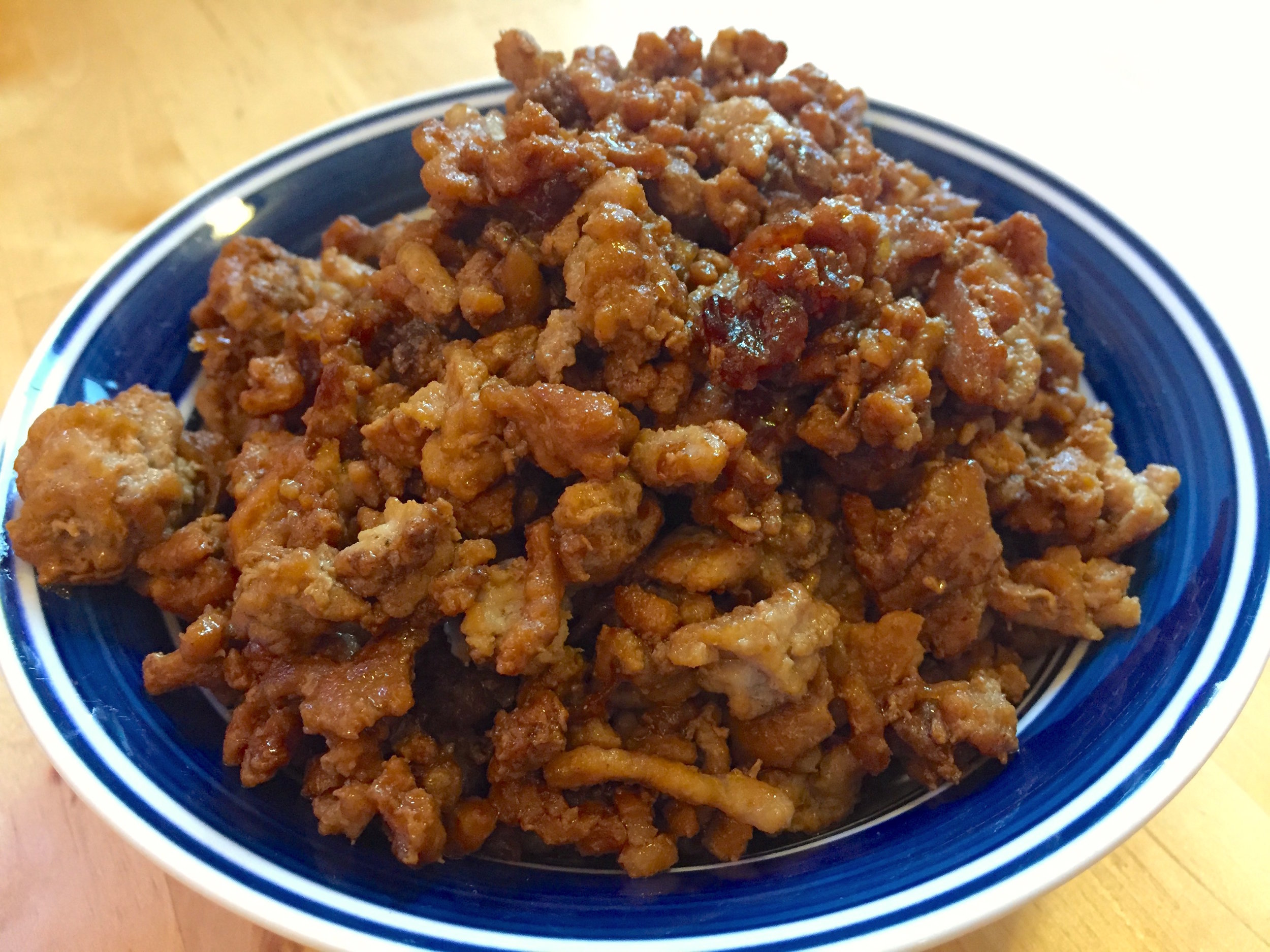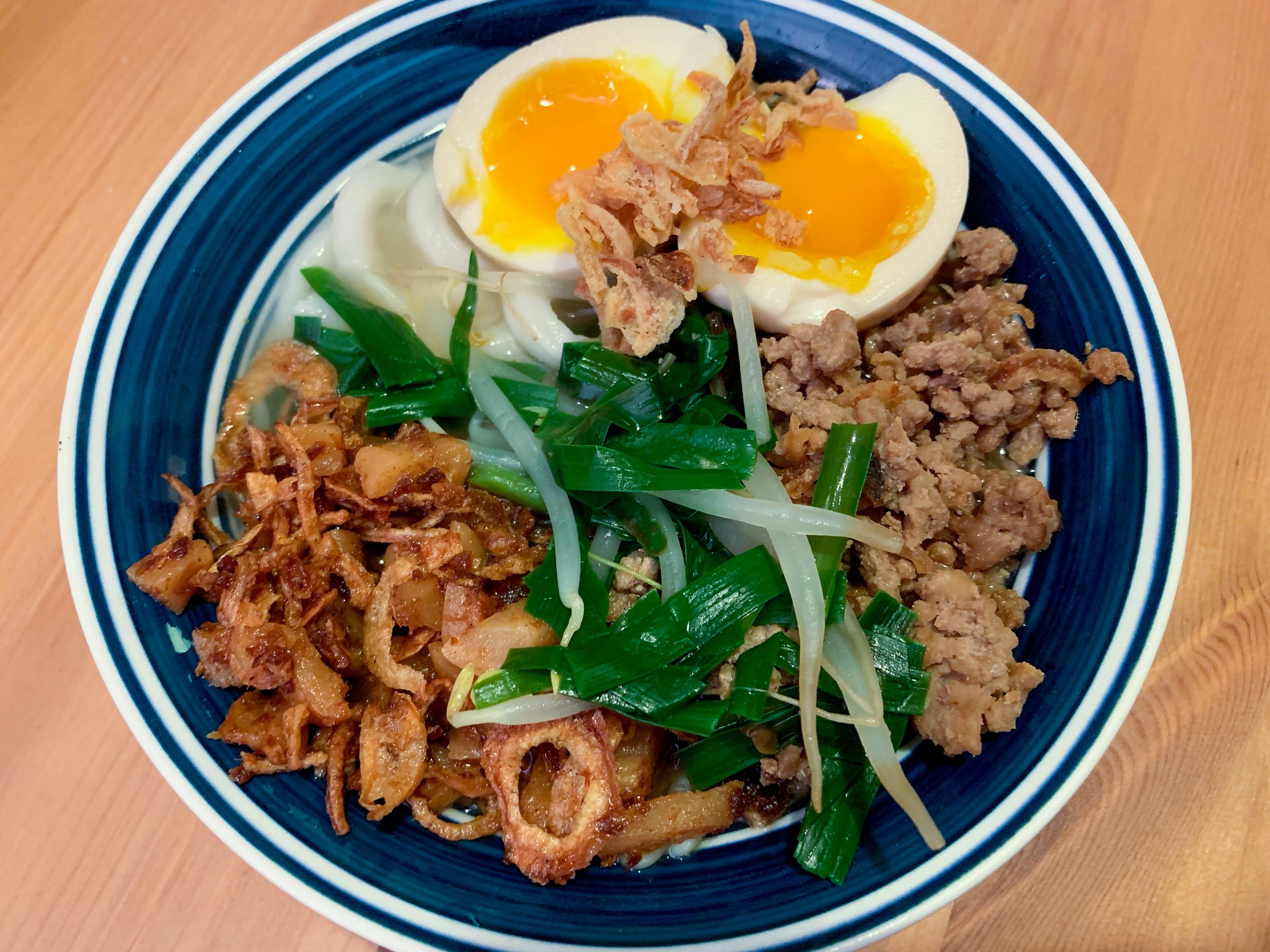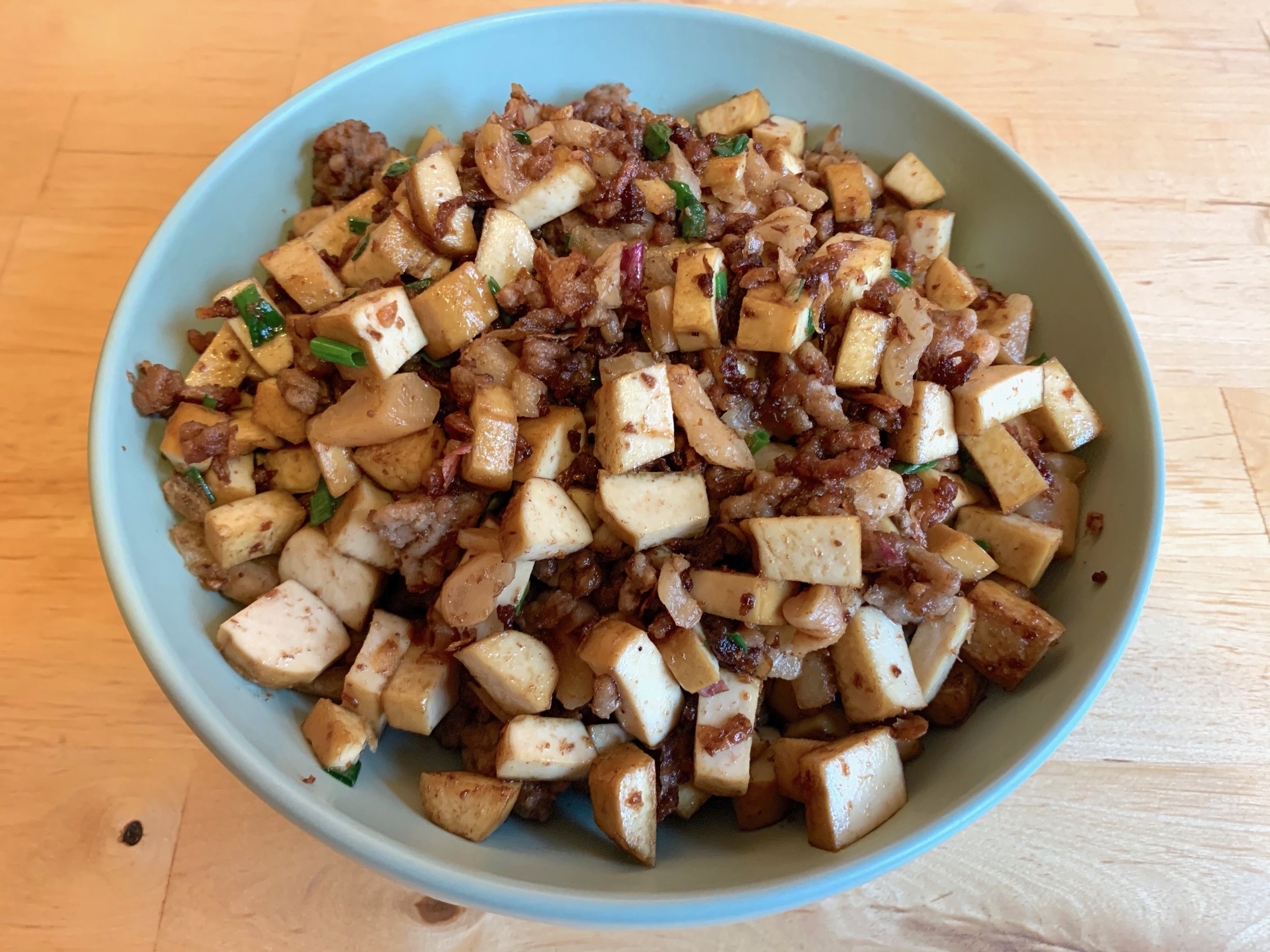Preserved Radish Omelet

菜脯蛋 (Cai Pu Dan)
Preserved daikon radish (菜脯, cai pu or chai poh)[1] is a popular ingredient in Hakka and Cantonese cooking. Traditionally made by salting slabs of daikon radish and then sun-drying them, preserved radish has a crunchy texture and a mild sweet and salty flavor[2]. Today we will be preparing a simple preserved radish omelet, a simple and savory dish perfect with a bowl of hot congee.
Ingredients
4 eggs
4 oz preserved radish
2 scallions, chopped
Vegetable oil
Begin by preparing the preserved radish, first rinsing them and then finely dicing. Because these radishes are preserved through salting, they are quite salty. We want to remove some of this salt by soaking the diced radish in a bowl of water for 10 minutes. Once the radish is done soaking, drain the water.
Crack four eggs into a bowl, and add the drained radish pieces and chopped scallions. The radishes should be plenty salty, so we do not need to add more salt to the eggs. Heat about a teaspoon of vegetable oil in a nonstick skillet over medium-high heat. While the oil is heating, beat the eggs together until the mixture is uniform.
When the oil comes up to temperature, pour the egg mixture into the pan. Swirl the skillet if necessary to distribute the egg evenly across the skillet’s surface. If the radish pieces end up on one side of the skillet, use chopsticks to help distribute the radishes evenly. We are looking for a final thickness of about ¼ inch, so if you have a smaller skillet or pan, consider cooking in batches. Unlike French-style omelets, which are soft and custardy all the way through, East Asian omelets tend to be crisp on the outside. However, we still want the center of the omelet to be tender. To accomplish this we are going with a relatively high heat, fast method, allowing us to brown the exterior without overcooking the center of the omelet.
Cook the omelet for about 3 minutes without moving or flipping it, until the egg has mostly set and the bottom side is browned and crisp. Flip the omelet over, and cook the second side for about 2 minutes. If you aren’t confident about flipping the entire omelet at once, you can break it up with a spatula and flip the pieces individually. Remove from the heat and cut the omelet into wedges. Serve with rice or congee.
Substitutions
Sometimes this dish is prepared with some minced garlic and/or minced pork in the egg mix.
[1] Preserved radish is also known as “蘿蔔乾”(luo bo gan), which means “dried radish.” In English, this ingredient is translated very inconsistently. I’ve pretty much seen every possible combination of the following words: preserved/salted/sun-dried/pickled radish/turnip/daikon. Unfortunately, there are so many different types of Asian pickles and preserved foods made with daikon or other radishes that if you are not a Chinese speaker, you may be best off going by a combination of look and the ingredients list. High quality preserved radish should be made of daikon radish, salt, and maybe a bit of sugar, with no other flavorings and minimal preservatives.
[2] If you’d like to learn more about how preserved radish is made and used in Chinese cooking, the Netflix series “Flavorful Origins” has an episode dedicated to the ingredient.
Recipe
Prep Time: 5 min Cook Time: 5 min Total Time: 20 min
(+10 min inactive)
Difficulty: 1/5
Heat Sources: 1 burner
Equipment: nonstick skillet
Servings: 4
Ingredients
4 eggs
4 oz preserved radish
2 scallions, chopped
Vegetable oil
Instructions
1. Dice the preserved radish into ¼ inch pieces, and soak them in cold water for 10 minutes.
2. Heat about 1 tsp vegetable oil in a nonstick skillet over medium-high heat. In a large bowl, beat 4 eggs. Stir in the drained radish pieces and chopped scallions.
3. When the oil is hot, pour the egg mixture into the skillet. Swirl the skillet so that the egg forms an even layer.
4. Fry for about 3 minutes, until the egg is browned and set. Flip the omelet and cook the other side for 2 minutes.
5. Cut into wedges and serve.














